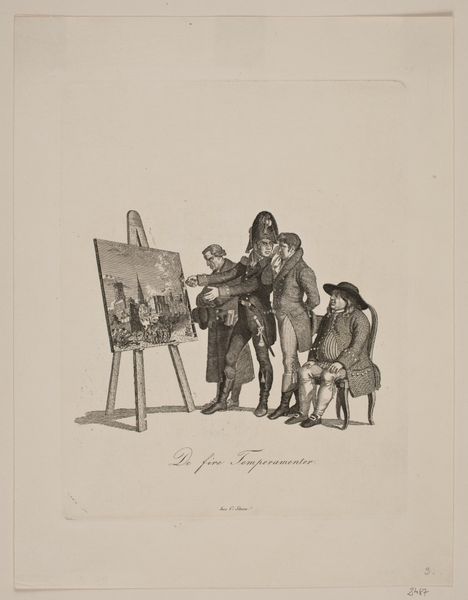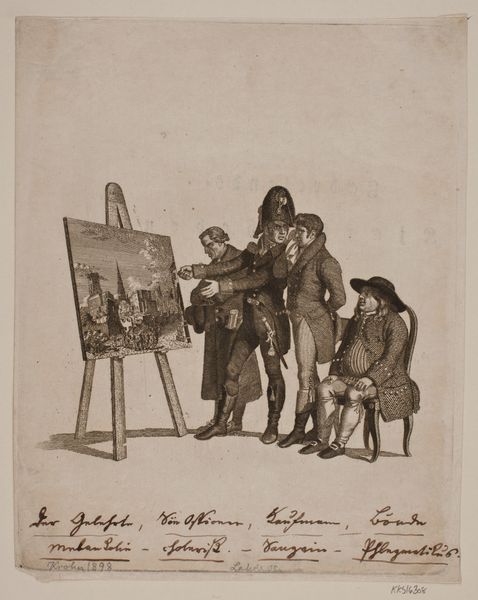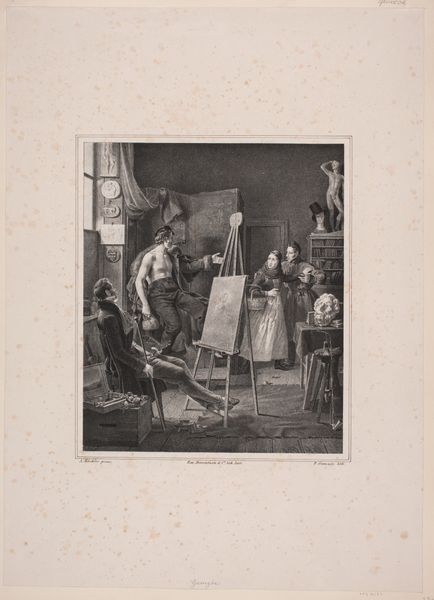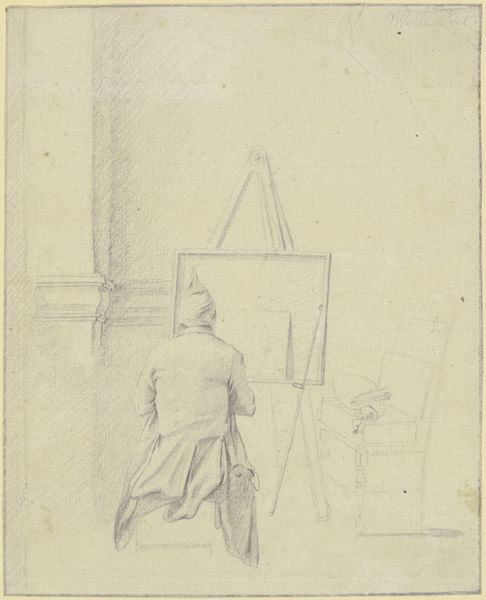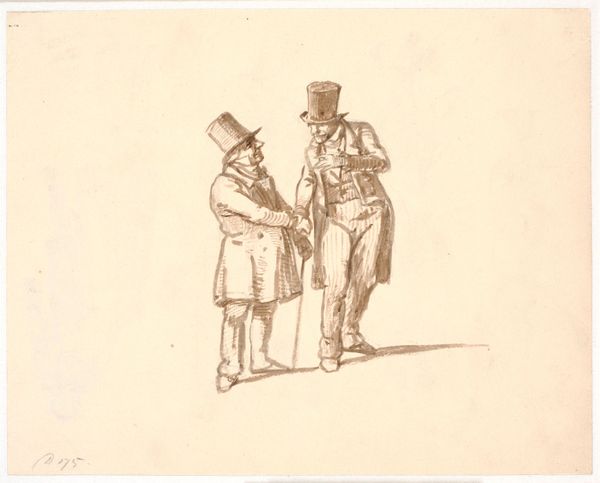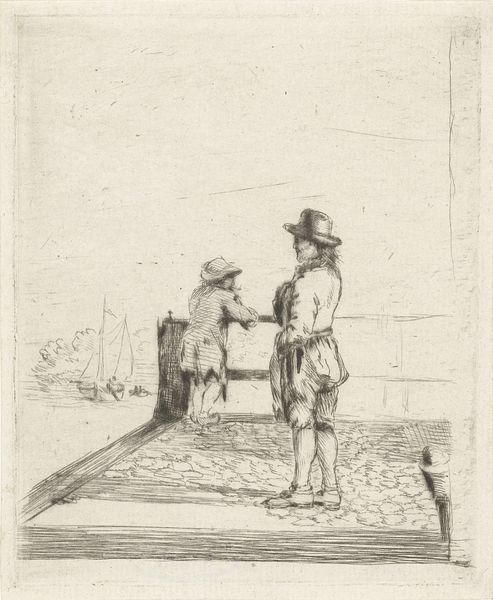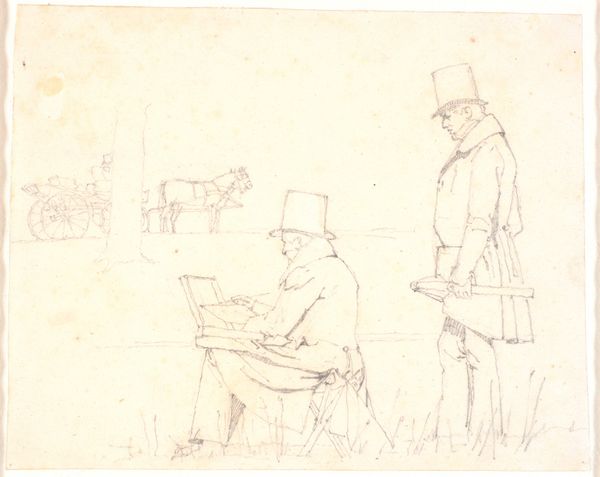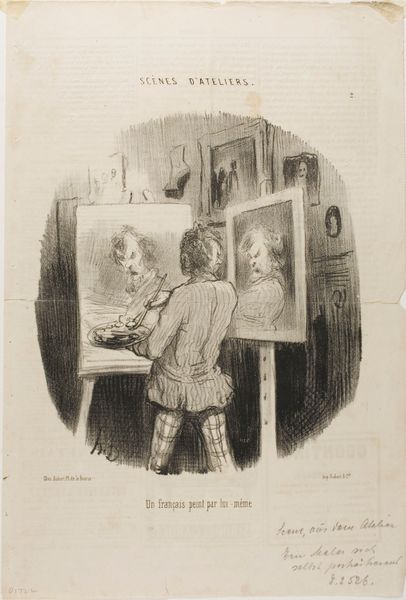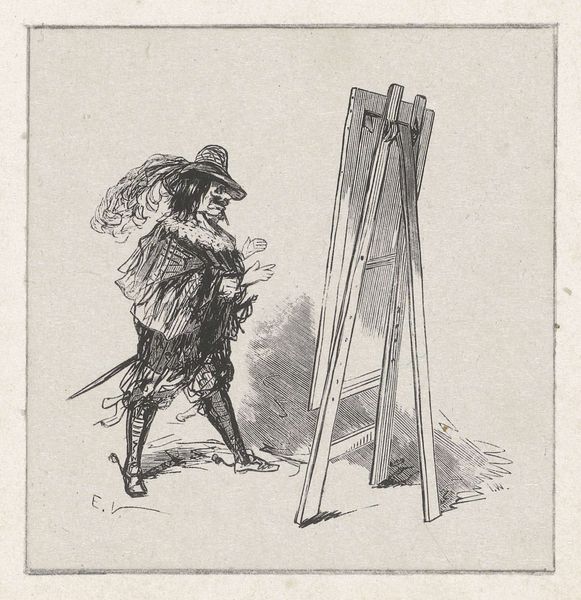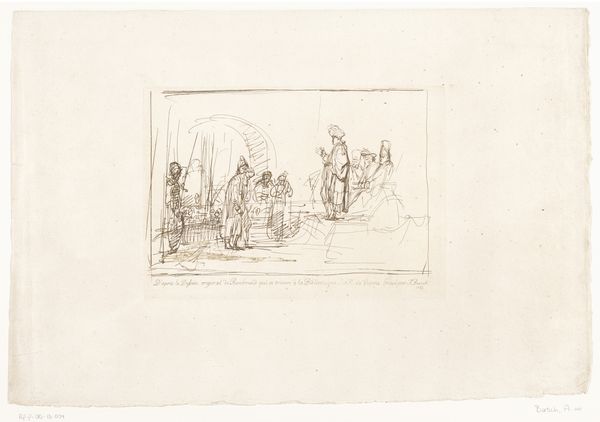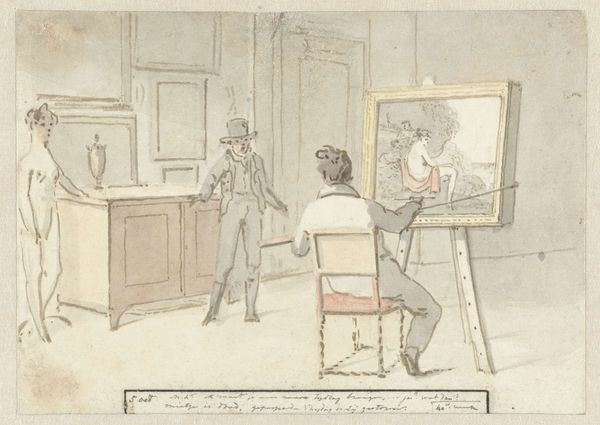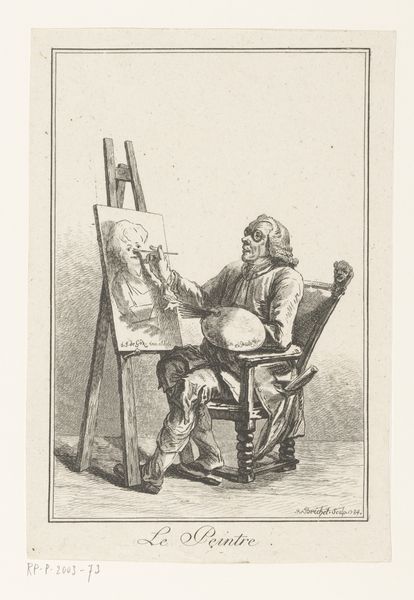
Portret van Johannes Franciscus Hoppenbrouwers voor zijn ezel en A. van den Berg toekijkend 1865
0:00
0:00
drawing, pencil
#
portrait
#
drawing
#
impressionism
#
pencil
#
genre-painting
Dimensions: height 163 mm, width 174 mm
Copyright: Rijks Museum: Open Domain
Curator: What strikes me first about this 1865 pencil drawing by Louis Apol, titled "Portret van Johannes Franciscus Hoppenbrouwers voor zijn ezel en A. van den Berg toekijkend," is its palpable sense of artistic self-awareness. It depicts the artistic process itself. Editor: Yes, and there's a subtle drama—almost a comedic one—in the contrast of the artist absorbed in his work and the upright figure observing, perhaps judging. It evokes the dynamic between creator and critic, doesn’t it? A powerful and recognizable dynamic in the creative sphere, still present today. Curator: Indeed. Consider how Apol meticulously renders the easel, the palette, the artist's focused posture—everything essential to the act of painting. There's a real emphasis on structure and form here. The use of line and value creates a structured hierarchy, guiding the eye. Editor: Beyond the purely formal, though, there's a narrative. Hoppenbrouwers, the painter, confronts not just the canvas, but also the symbolic gaze of Van den Berg, perhaps representing societal expectations or the judgement of artistic peers. The painting within the drawing, so to speak, creates an introspective feel. Curator: Good point. But if we focus purely on its structural qualities, the piece relies on implied lines to draw connections between the three central subjects of the painting: the easel, Hoppenbrouwers, and Van den Berg. This lends balance and stability, don't you think? The work, for me, gains power and intrigue from the masterful, underlying architecture present within it. Editor: I agree, yet those muted tones, for me, invoke a melancholic feel, speaking of art’s constant grappling with transience, the fading of time, the pressures of onlookers. It invites viewers to recognize and remember similar power dynamics they may have encountered. A commentary, perhaps, on the artist's solitary struggles amidst public scrutiny. Curator: It is a delicate dance of intention and interpretation. Considering the way you explore deeper meaning in art is always fascinating, as is the process by which we evaluate formal choices in artwork. Editor: Yes, seeing your analytical framework for appreciating art has made me think differently about this piece—thank you for helping me explore more depth and structure.
Comments
No comments
Be the first to comment and join the conversation on the ultimate creative platform.
